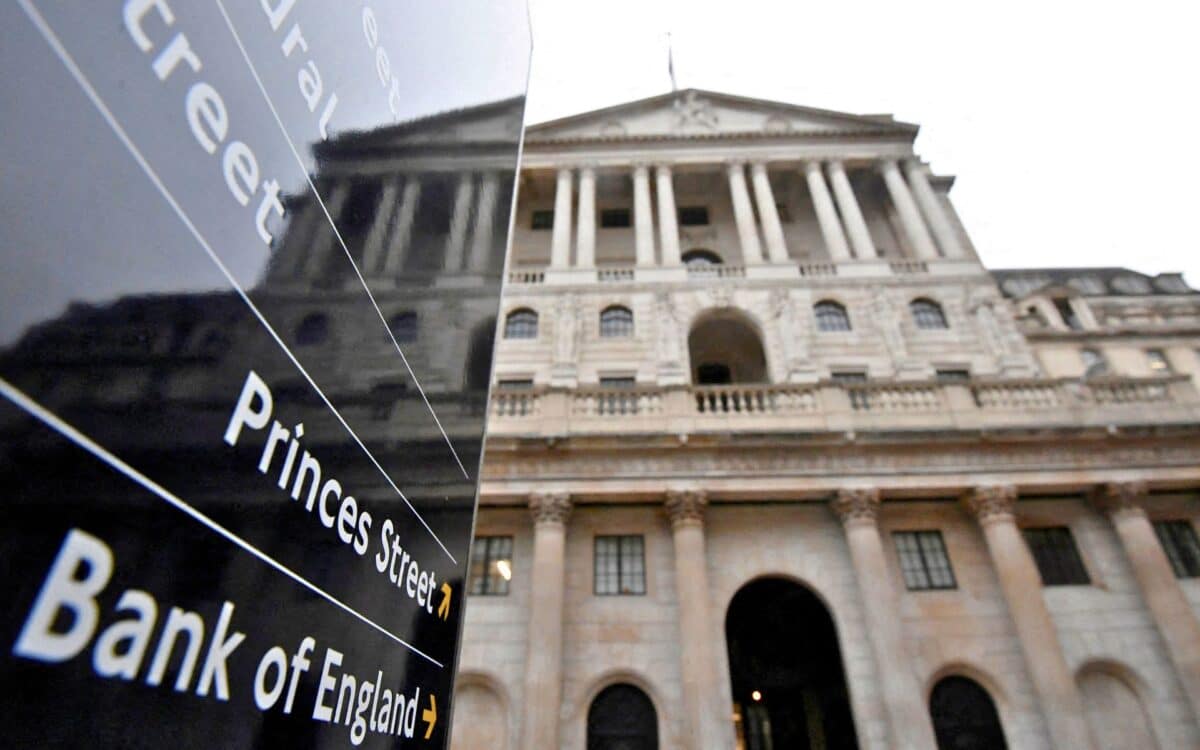Hopes for an imminent Bank of England (BoE) base rate cut have been quashed following new data showing a resurgence in inflation.
Persistent Services Inflation Complicates BoE’s Strategy Amid Global Rate Cut Trends
In November, the consumer price index (CPI) rose to 2.6% from 2.3% in October, according to the Office for National Statistics. This reflects persistent pressures in services inflation, which held steady at 5%. In September, CPI had briefly dipped below the BoE’s 2% target, but the trend has since reversed.
This inflationary backdrop complicates the BoE’s outlook, pushing potential rate cuts further into 2024. Markets are now pricing in two 25-basis-point cuts next year, which would bring the base rate down from its current 4.75% to 4.25% by the end of 2025.
Although, this cautious approach contrasts with expectations for the US Federal Reserve and the European Central Bank, which are predicted to adopt more aggressive stances.
| Central Bank | Current Rate | Projected Rate for 2024/2025 | Approach |
|---|---|---|---|
| Bank of England (BoE) | 4.75% | 4.25% | Gradual cuts, cautious stance |
| US Federal Reserve | ~5.5% | Expected <4.5% | Aggressive reduction |
| European Central Bank | ~4.0% | Anticipated ~3.0% | Moderate easing |
Wage Growth and Sector Pressures Fuel Core Inflation Rise Despite Airfare Price Drop
Core inflation, which excludes volatile items such as energy and food, also edged higher, rising from 3.3% to 3.5%. This comes on the heels of strong wage growth data, which continues to drive inflation despite slowing economic growth.
Observations on Core Inflation:
- Sectors Driving Inflation:
- Housing and household services.
- Restaurants, hotels, and recreational activities.
- Offsetting Factor:
- A sharp 19.3% drop in airfare prices tempered broader inflationary pressures.
- Implications:
- Persistent wage inflation remains a central driver of costs, especially in services.
Michael Field, strategist at Morningstar, attributed the October CPI rise to an increase in the energy price cap but noted that November’s continued rise points to deeper inflationary pressures.
Fiscal Policies Could Influence Inflation
Measures announced in the Autumn Budget, set to take effect in April, could also fuel inflation. Jeff Brummette, chief investment officer at Oakglen Wealth, warned that increased employer National Insurance contributions and higher government spending could lead businesses to raise prices.
Risks Associated with Fiscal Policy:
- Employer Costs: Businesses may increase prices to offset higher National Insurance contributions.
- Spending Dynamics: Increased government spending could amplify demand-side pressures, potentially stoking inflation further.
If inflation remains within the 2-3% range next year, markets may remain stable. However, a rise above this range could push the BoE back toward rate hikes.
Service Sector Inflation: Key Drivers and Potential Moderation Amid Airfare Price Drop
Services inflation remains a focal point, slightly underperforming market forecasts of 5.1% to 5%. However, significant upward pressure persists in housing, hospitality, and leisure sectors. A notable exception was a sharp 19.3% monthly drop in airfare prices.
Lindsay James, strategist at Quilter Investors, highlighted the potential for wage growth to moderate due to factors like declining job vacancies and increased employer contributions. This could help reduce inflation in the service sector, where wages account for roughly 60% of costs.
Breakdown of Service Inflation Drivers:
- Upward Pressures:
- Housing and household services.
- Restaurants and hospitality.
- Leisure and recreational activities.
- Offsetting Factors:
- Airfare price drop: -19.3% in November.
- Potential wage growth moderation from rising employer costs.
Analysts Predict Possible Decline in Services Inflation by Spring 2024
Despite the challenges, some analysts are optimistic. James Smith, an economist at ING, expects services inflation to hover near 5% in early 2024 but predicts it could fall to around 3% by spring. Annual price adjustments, such as those for telecommunications services indexed to inflation, are likely to be less severe in April 2024 compared to 2023.
This reduction could bring core inflation below 3%, providing the BoE with more flexibility to accelerate rate cuts. However, for now, the Bank is expected to hold rates steady and avoid making any strong forward-looking statements during this week’s meeting.









